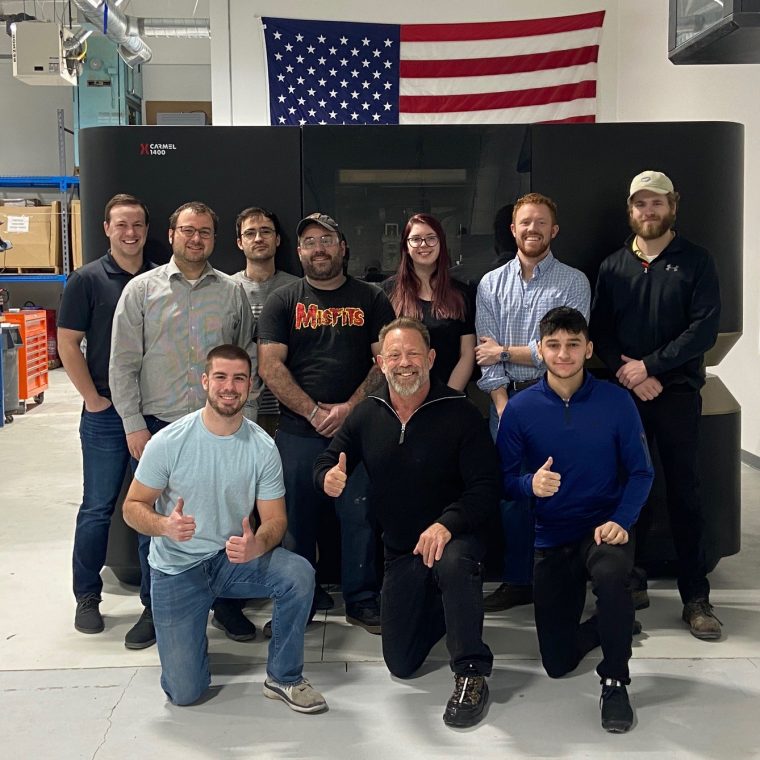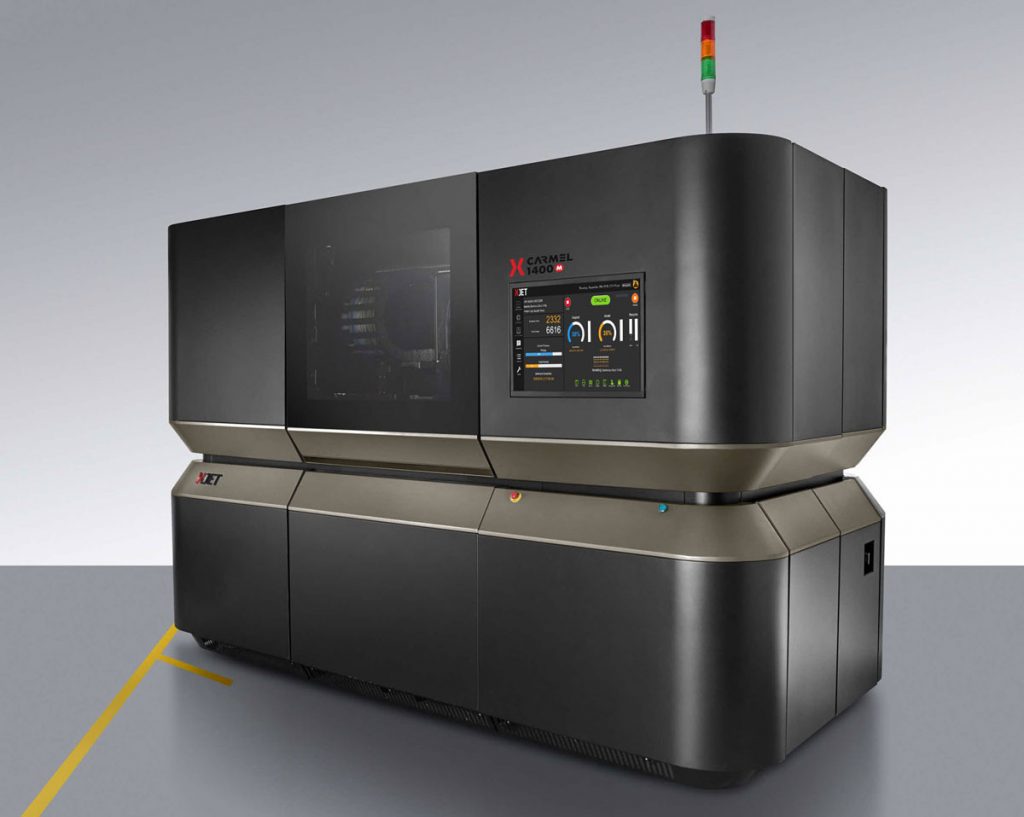Israeli 3D printer manufacturer XJet has delivered its first commercial metal 3D printing system to additive manufacturing service provider Azoth.
Originally released back in 2019, the Carmel 1400M 3D printer is reportedly the first material jetting system in the world capable of processing both metals and ceramics, combining repeatability and part quality for industrial applications.
Based on XJet’s proprietary NanoParticle Jetting (NPJ) process, the machine features a large-format 500 x 280 x 200mm build tray and can print batches of metal parts with high throughput.
“We have a huge wealth of experience in metal manufacturing – with both additive and subtractive processes. XJet’s metal system delivers capabilities that are in high demand in the market, but are not achievable with other technologies,” said Scott Burk, Azoth’s CEO. “Parts with fine features, high resolution, good surface finish right off the printer – at a level we have not seen before. The ease-of-use and safety working with the XJet system, which does not involve handling powders, is another important factor for us.”

XJet’s NanoParticle Jetting technology
All of XJet’s 3D printers operate on the company’s NanoParticle Jetting technology. The unique material jetting approach involves spraying nanoparticles embedded in a liquid shell. Once deposited onto a build plate, the liquid outer shells evaporate to leave behind solid, bonded parts made of fused nanoparticles. The resulting components feature high levels of detail, a great surface finish, and dimensional precision.
The firm launched its first NPJ systems, the Carmel 1400 and smaller Carmel 700 3D printers, in 2017. Then in 2019, XJet rebranded the Carmel 1400 to distinguish which models could process ceramics (C) and which could process metals (M).
XJet has since delivered several of its ceramic 3D printers to clients, including a Carmel 1400C to Katholieke Universiteit Leuven (KU Leuven) in Belgium. This was the first XJet system to be implemented at an academic institution within Europe. The company also partnered with dentistry firm Straumann to advance the capabilities of the Carmel 1400C for dentistry applications.
More recently, XJet also launched its Support Material Automatic Removal Technology, or ‘SMART’, post-processing station. Marketed as the “last link in the chain” for automated end-to-end 3D printing, the SMART unit uses intelligent algorithms to automatically remove supports from XJet-manufactured ceramic parts.
Hanan Gothait, CEO of XJet, adds, “We have developed the only metal AM technology available today based on the concept of direct material jetting. After amazing success with the XJet ceramic systems, we are now ready for the bigger dream, bringing to the market our metal solution.”

Commercializing the Carmel 1400M
With Azoth as its latest customer, XJet has now officially commercialized the Carmel 1400M 3D printer. Operating under East West Industrial Engineering (EWIE), Azoth’s background is in high-volume metal manufacturing for major firms such as Ford, Chrysler, and Rolls-Royce. The firm was established when EWIE decided to finally enter the additive manufacturing sector in 2020.
Azoth’s senior leadership came across XJet when it was searching the market for technologies capable of producing small, complex, and high-definition parts that conventional powder bed fusion simply couldn’t manage. Since NPJ prints with very small particles, it allows for tiny layer heights and extremely fine feature details.
Cody Cochran, Azoth’s co-founder and General Manager, explains, “My eureka moment came when we got some test parts through from XJet and I asked the team how they looked, and they responded that they were the best they’d ever seen. What we really liked were the small holes, very sharp corners, and very refined surface finish without needing any post-processing.”
As well as part quality, Azoth also expects to benefit from operational advantages. The Carmel 1400M is suited for both prototyping and end-use production, so the firm will be able to try out various design iterations and take a component to production with the very same machine.

Subscribe to the 3D Printing Industry newsletter for the latest news in additive manufacturing. You can also stay connected by following us on Twitter, liking us on Facebook, and tuning into the 3D Printing Industry YouTube Channel.
Looking for a career in additive manufacturing? Visit 3D Printing Jobs for a selection of roles in the industry.
Featured image shows the Azoth team with their new XJet Carmel 1400M 3D printer. Photo via XJet.


